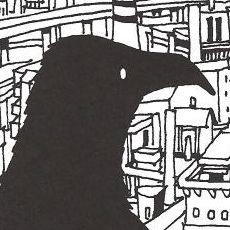Tag: action
-
Soul and style: Toradora and Michiko e Hatchin
Read More →: Soul and style: Toradora and Michiko e HatchinIt’s the eve of the latest spring season, but I’m still playing catch up with a lot of last year’s finest. Last week it was Xam’d, and this week it’s Michiko e Hatchin and Toradora. I’m only too aware that the anime community is driven by an insatiable desire for ‘newness’, and I’m really excited…
-
Free skies, and endless land
Read More →: Free skies, and endless landThe problem with writing an anime blog for any length of time is that I’m prone to repeating myself. I’ve had this ache to write about something, anything, over the last month or so, but there are only so many times I can say “this is good, that is bad” without feeling as though I’m…
-
Until I kill you, I'll even eat mud to survive! Hokuto no Ken
/
/ ReviewsRead More →: Until I kill you, I'll even eat mud to survive! Hokuto no KenWhen I finished watching Legend of the Galactic Heroes late last year, I felt like I’d had my fill of sprawling eighties anime series for a fair old time to come, but fate, it seems, has long been conspiring against me. My destiny had seven scars on his chest. A mere swipe of his hand…
-
When eternal love goes wrong [Kurozuka]
/
/ ReviewsRead More →: When eternal love goes wrong [Kurozuka]I had high hopes for Kurozuka, because it is a genre of anime I tend to enjoy, that being stylish, far-fetched, visually-intoxicating science fiction. It is a beautifully drawn journey, in-which 1,000 years of vampiric romance sweeps across the Heian period of Japan to the bombing of Japanese cities during World War 2 to a…
-
Casshern Sins: You looked as if you were dancing
Read More →: Casshern Sins: You looked as if you were dancingIt’s hard to explain how I feel about Casshern Sins. It’s way beyond anything else I’ve seen this year. More than just another good anime series, more than just entertainment, I find it is engaging, evocative and inspiring, perched somewhere in-between the surreal, fable-like quality of Kino’s Journey and the philosophical melancholy of Mushishi. After…
-
I'll ruin you because I love you
/
/ ReviewsRead More →: I'll ruin you because I love youEpisode four of Casshern Sins; an animated, beautiful contradiction. Perfectly flawed, just the way I like it.
-
A tribute to Soul Eater 18
Read More →: A tribute to Soul Eater 18It’s been a long time since my last foray into Soul Eater. Too long, really. And it’s easy to forget just how fun it is, how exciting, how damn awesome. I mean, there are certain things that will always stick out, launch it above other series, and these two episodes were no different. Consider the…
-
One Piece and why a man is only as good as his word
Read More →: One Piece and why a man is only as good as his wordBrook: “He may think that we’ve betrayed him, but if he’s waiting even now, how miserable must he be? […] I can’t help but think that he’s believed in us all this time.“ Luffy: “Your nakama may be dead, but from now on I’m your rival!“ I love One Piece. I love how it can…
-
Batman: Gotham Knight isn't as good as The Animatrix
/
/ ReviewsRead More →: Batman: Gotham Knight isn't as good as The AnimatrixDesigned to replicate the success of 2003’s The Animatrix, Batman: Gotham Knight is another anime anthology riding on the crest of a trendy movie franchise that seems destined, by virtue of Hollywood’s dollar, to be seen by many more people than your average Planetes or Gungrave. Like it or not, it’s exactly this kind of…
